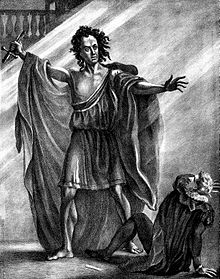
Frankenstein is a 1931 American gothic pre-Code science fiction horror film directed by James Whale, produced by Carl Laemmle Jr., and adapted from a 1927 play by Peggy Webling, which in turn was based on Mary Shelley's 1818 novel Frankenstein; or, The Modern Prometheus. The Webling play was adapted by John L. Balderston and the screenplay written by Francis Edward Faragoh and Garrett Fort, with uncredited contributions from Robert Florey and John Russell.
This article contains information about the literary events and publications of 1823.

Frankenstein's monster, commonly referred to as Frankenstein, is a fictional character that first appeared in Mary Shelley's 1818 novel Frankenstein; or, The Modern Prometheus as its main antagonist. Shelley's title compares the monster's creator, Victor Frankenstein, to the mythological character Prometheus, who fashioned humans out of clay and gave them fire.
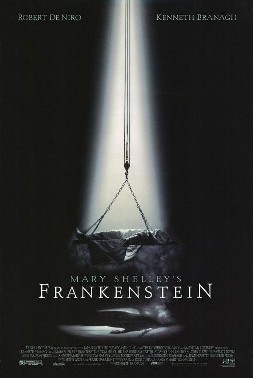
Mary Shelley's Frankenstein is a 1994 science fiction horror film directed by Kenneth Branagh who also stars as Victor Frankenstein, with Robert De Niro portraying Frankenstein's monster, and co-stars Tom Hulce, Helena Bonham Carter, Ian Holm, John Cleese, Richard Briers and Aidan Quinn. Considered the most faithful film adaptation of Mary Shelley's 1818 novel in some respects, Frankenstein; or, The Modern Prometheus, despite several differences and additions in plot from the novel, the film follows a medical student named Victor Frankenstein who creates new life in the form of a monster composed of various corpses' body parts.

Victor Frankenstein is a fictional character who first appeared as the titular main protagonist of Mary Shelley's 1818 novel, Frankenstein; or, The Modern Prometheus. He is a Swiss scientist who, after studying chemical processes and the decay of living things, gains an insight into the creation of life and gives life to his own creature. Victor later regrets meddling with nature through his creation, as he inadvertently endangers his own life and the lives of his family and friends when the creature seeks revenge against him. He is first introduced in the novel when he is seeking to catch the monster near the North Pole and is saved from near death by Robert Walton and his crew.

Igor, or sometimes Ygor, is a stock character, a sometimes hunch-backed laboratory assistant to many types of Gothic villains or as a fiendish character who assists only himself, the latter most prominently portrayed by Bela Lugosi in Son of Frankenstein (1939) and The Ghost of Frankenstein (1942). He is familiar from many horror films and horror film parodies. He is traditionally associated with mad scientists, particularly Victor Frankenstein, although Frankenstein has neither a lab assistant nor any association with a character named Igor in the original Mary Shelley novel. The Igor of popular parlance is a composite character, based on characters created for the Universal Studios film franchise. In the first Frankenstein film (1931), Fritz served the role; in the sequels, a different physically deformed character, Ygor, is featured, though Ygor is not an assistant in those films.
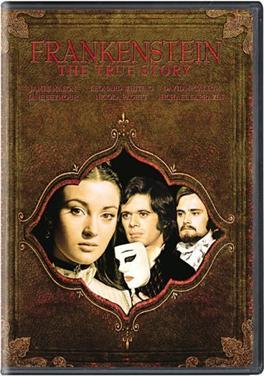
Frankenstein: The True Story is a 1973 British made-for-television film loosely based on the 1818 novel Frankenstein; or, The Modern Prometheus by Mary Shelley. It was directed by Jack Smight, and the screenplay was written by novelist Christopher Isherwood and his longtime partner Don Bachardy.

Mary Shelley's 1818 novel Frankenstein; or, The Modern Prometheus, and the famous character of Frankenstein's monster, have influenced popular culture for at least a century. The work has inspired numerous films, television programs, video games and derivative works. The character of the Monster remains one of the most recognized icons in horror fiction.

Frankenstein is a 2004 American television miniseries based on the 1818 novel Frankenstein; or, The Modern Prometheus by Mary Shelley.

Frankenstein; or, The Modern Prometheus is an 1818 Gothic novel written by English author Mary Shelley. Frankenstein tells the story of Victor Frankenstein, a young scientist who creates a sapient creature in an unorthodox scientific experiment. Shelley started writing the story when she was 18, and the first edition was published anonymously in London on 1 January 1818, when she was 20. Her name first appeared in the second edition, which was published in Paris in 1821.

Frankenstein is a television horror film first aired in 1992, based on Mary Shelley's 1818 novel Frankenstein; or, The Modern Prometheus. It was produced by Turner Pictures and directed by David Wickes.

Frankenstein is a stage adaptation by Nick Dear of Mary Shelley's 1818 novel Frankenstein; or, The Modern Prometheus.

Robert Keeley was an English actor-manager, comedian and female impersonator of the nineteenth century. In 1823 he originated the role of 'Fritz' in Presumption; or, the Fate of Frankenstein, the first known stage adaptation of Mary Shelley's novel Frankenstein.
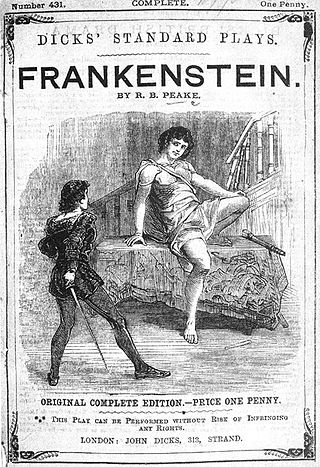
Richard Brinsley Peake was a dramatist of the early nineteenth century best remembered today for his 1823 play Presumption; or, the Fate of Frankenstein, a work based on the novel Frankenstein by Mary Shelley. It was Peake, not Shelley, who wrote the famous line, "It lives!"
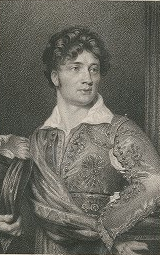
Thomas Potter Cooke was an English actor.

Science fiction theatre includes live dramatic works, but generally not cinema or television programmes. It has long been overshadowed by its literary and broadcast counterparts, but has an extensive history, and via the play R.U.R. introduced the word robot into global usage.

Frankenstein, MD is a 2014 American Gothic horror comedy webseries with transmedia elements. Produced in partnership between Pemberley Digital and PBS Digital Studios, the show is a modern adaptation of Mary Shelley's 1818 novel Frankenstein; or, The Modern Prometheus, replacing the eponymous character with Victoria Frankenstein, a medical student near graduation. The show, which represents PBS Digital's first foray into scripted content, was created by Bernie Su, Brett Register, and Lon Harris. It ran on YouTube from August 19 through October 31, 2014, and was generally well-received by critics.
Frankenstein is a 1973 American television movie adaptation of Mary Shelley's 1818 novel Frankenstein; or, The Modern Prometheus adapted by Sam Hall and Dark Shadows creator Dan Curtis, with Robert Foxworth in the title role and Bo Svenson as the Monster.

Richard John Smith was a British actor of the early Victorian era. He was among the first to play Frankenstein's monster on stage, which he did in 1826 in The Man and The Monster; or The Fate of Frankenstein.


